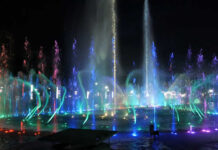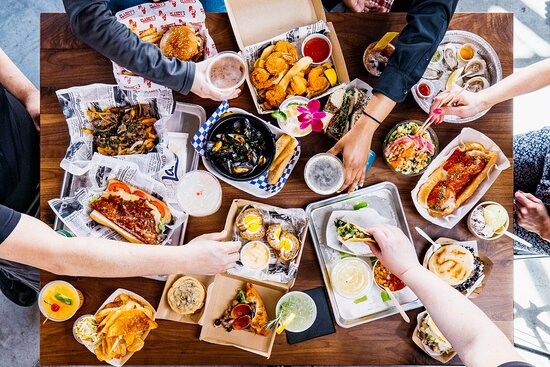Crafting an unforgettable dining experience goes beyond just serving delectable dishes. It extends to the very fabric of a restaurant, quite literally: the furniture. A strategic blend of aesthetics, comfort, and functionality in commercial restaurant furniture holds the key to shaping customers’ perceptions and, consequently, the success of a dining establishment.
Restaurants aim to separate out in the ever-competitive restaurant market, where culinary prowess is frequently matched. It’s not just about the flavor; it’s about the full sensory experience. Understanding the psychology of seating patterns and clever restaurant furniture selection is critical to improving customer experience. Every aspect, from the comfort of the seats to the color of the upholstery, influences the mood and, as a result, client happiness.
Impact of Seating Arrangements on Customer Behavior
Consider the familiar scenario: the subtle curve of a chair back, the plushness of the cushion. These seemingly small details significantly impact customer behavior. Comfort is not just a luxury but a psychological trigger influencing perceptions of time and satisfaction. A well-thought-out seating arrangement not only ensures physical comfort but also subconsciously enhances the overall dining experience.
Social dynamics are another critical aspect. The arrangement of tables and chairs can either encourage lively group conversations or provide intimate settings for solo diners. Understanding the psychology behind social interactions aids in designing spaces that cater to different preferences. Whether fostering community vibes or creating cozy nooks for solitude, the seating arrangement becomes a silent orchestrator of the dining experience.
Privacy, too, plays a pivotal role. Striking the right balance between open layouts and secluded spaces is an art. For romantic dinners or celebratory gatherings, the way seating is arranged can either enhance or detract from the desired atmosphere. Achieving this balance ensures that customers feel both a part of the vibrant restaurant scene and cocooned in their private moments.
Design Psychology: Choosing the Right Furniture
The color palette of restaurant furniture is more than just for looks. Colors elicit emotional responses and create the tone for the eating experience. Warm colors make you feel cozy, while cool colors make you feel peaceful. Colors must be coordinated with the restaurant’s brand and idea. A well-coordinated color scheme not only pleases the sight but also helps to a well-rounded and memorable dining experience.
Material selection is also important. Aside from aesthetics, the tactile feel of various materials adds to the whole sensory adventure. Leather upholstery portrays sophistication, whilst wood may emanate warmth and genuineness. Material selection should take into account not only visual appeal but also durability and maintenance—factors that influence long-term client satisfaction.
A restaurant’s identity is enhanced by furniture types and themes. Aligning furniture with the brand and concept of the establishment creates a unified and immersive experience. Whether modern chic or classic elements are included, the chosen design sets the tone for the culinary story.
Ergonomics and Comfort
Ergonomics is the unsung hero of commercial-grade restaurant furniture. It’s not just about creating visually appealing spaces; it’s about ensuring prolonged customer comfort. Well-designed furniture considers the human body’s natural movements, promoting relaxation and preventing discomfort. The marriage of aesthetics and functionality is where the magic happens, leaving customers both content and comfortable.
Balancing aesthetics with functionality involves thoughtful design that doesn’t compromise on comfort. A visually stunning chair that leaves patrons shifting uncomfortably throughout the meal is a missed opportunity. Successful restaurant furniture design harmonizes aesthetics and function, creating an environment where form seamlessly follows function.
Role of Layout in Customer Experience
Spatial psychology comes into play when optimizing restaurant space. It’s not just about fitting in as many tables as possible but about creating a comfortable flow. Thoughtful spatial planning considers customer comfort, staff efficiency, and accessibility. A well-organized layout contributes to an overall positive experience, making customers feel at ease and welcome.
Zoning and atmosphere go hand in hand. Designating distinct zones for different customer preferences, be it a lively bar area or an intimate dining space, caters to diverse tastes. The strategic arrangement of furniture in each zone contributes to the overall atmosphere, ensuring that each corner of the restaurant has its unique charm.
Future Trends in Commercial Restaurant Furniture
Technological integration will define the future of restaurant furniture. Smart furniture with interactive elements is becoming more popular. Technology improves the eating experience, from programmable lighting to computerized menus built onto tables. Restaurants that embrace these advancements not only keep ahead of the competition but also cater to a tech-savvy customer base.
Sustainable and environmentally friendly design is becoming increasingly significant. Customers are more concerned about their environmental impact, and restaurants that share these ideals receive great feedback. Sustainable choices, such as employing recycled materials and implementing energy-efficient designs, not only benefit the environment but also improve the restaurant’s appeal.
Enhancing Customer Experience Through Thoughtful Furniture Choices
Commercial restaurant furniture plays an important role in the vast tapestry of dining, where flavors dance on the palate and scents weave through the air. It is more than just practical elements; it is the silent conductor orchestrating patrons’ sensory trip. Thoughtful furniture selections not only improve the environment but also help to define the restaurant’s personality.
As we traverse the ever-changing restaurant scene, those who understand the psychology of seating and invest in intelligent, customer-centric furniture selections are set to generate not just meals but memories. It’s a story about how comfort, design, and functionality come together to leave a lasting impression on the hearts and taste buds of discerning eaters. The furniture becomes a melodic note in this symphony of tastes and textures, resonating with each patron, creating an experience that transcends the boundaries of culinary delight, a story told in every meticulously chosen chair and table, etching memories that linger long after the last bite is savored.





















